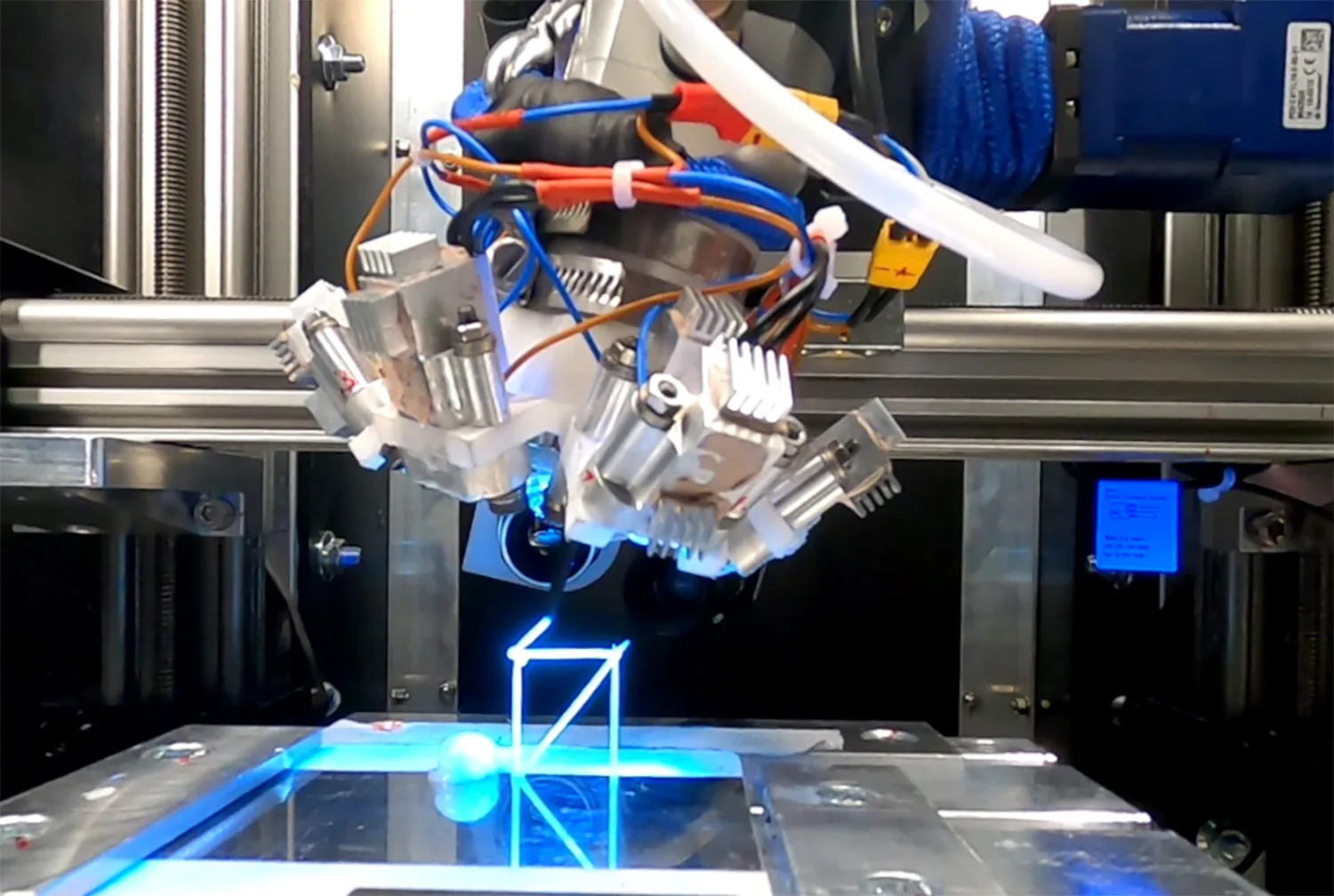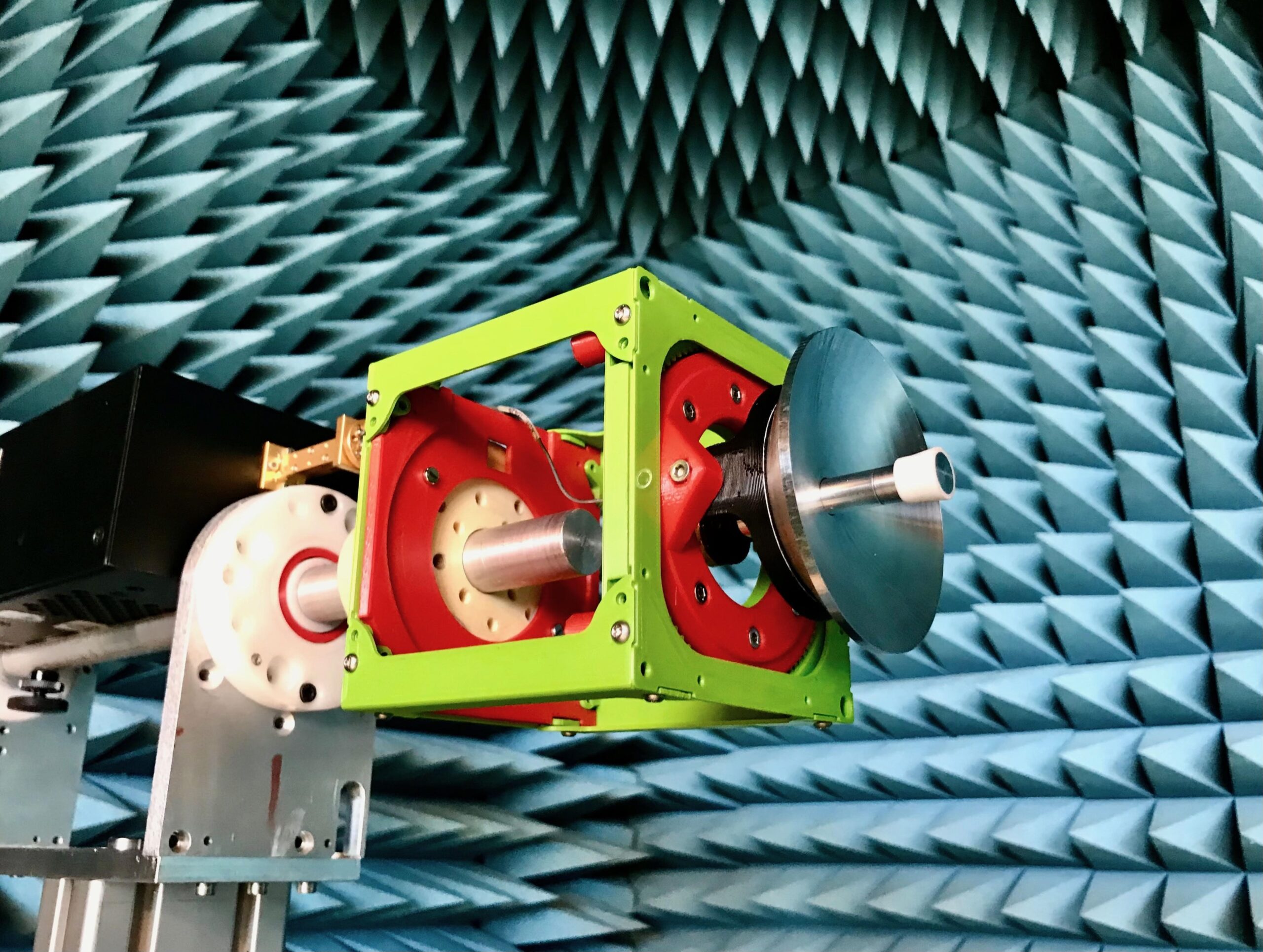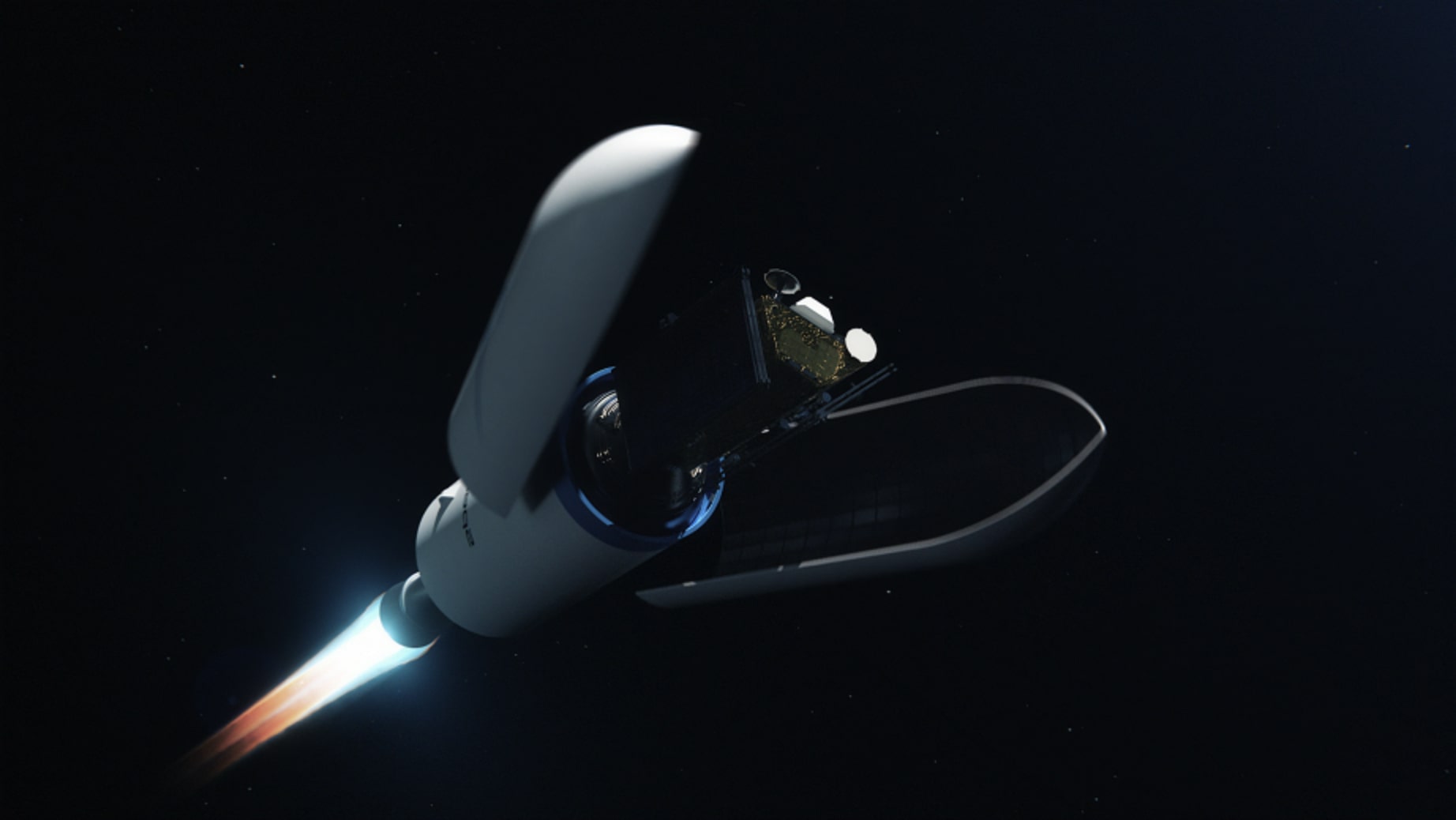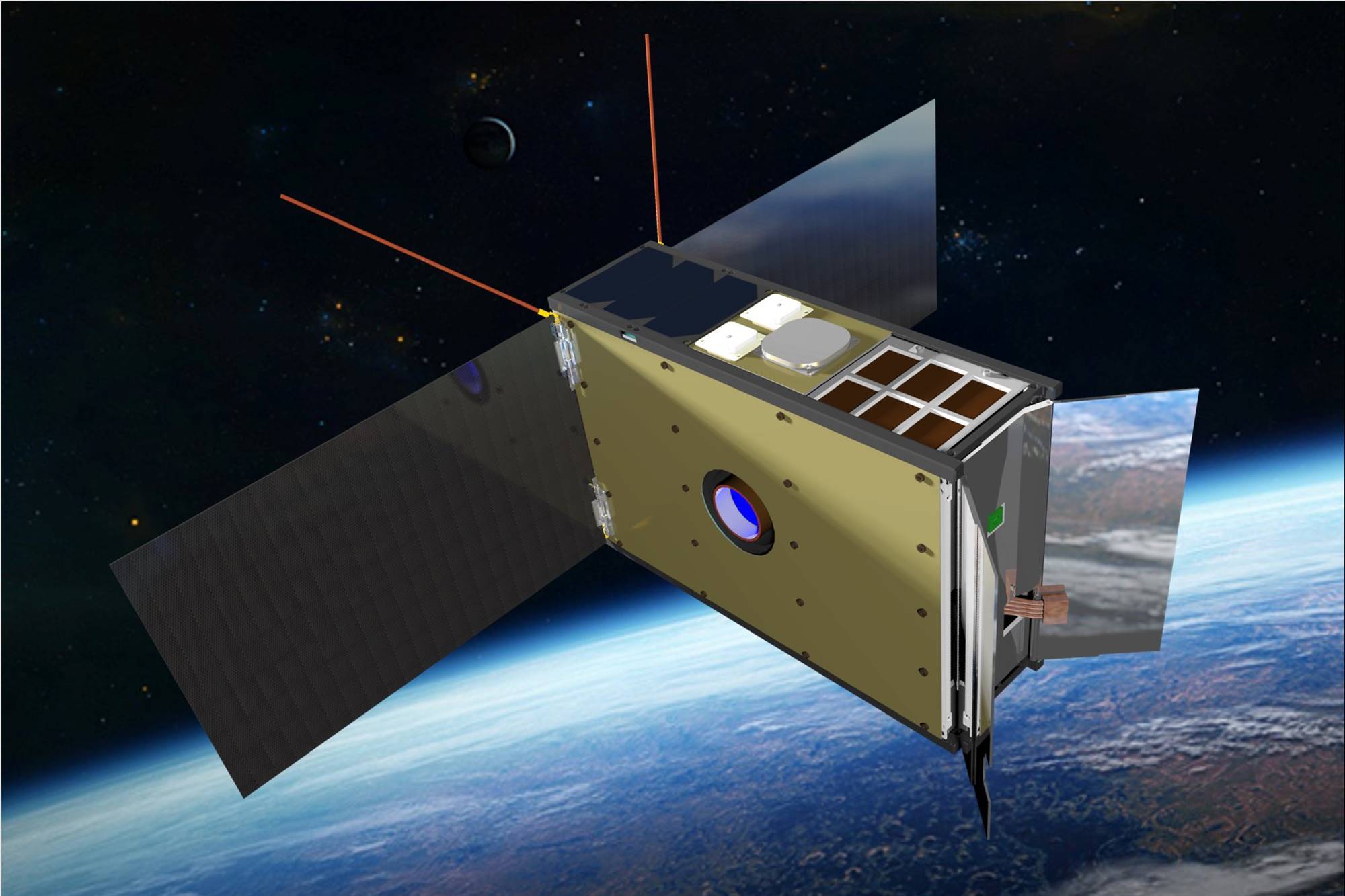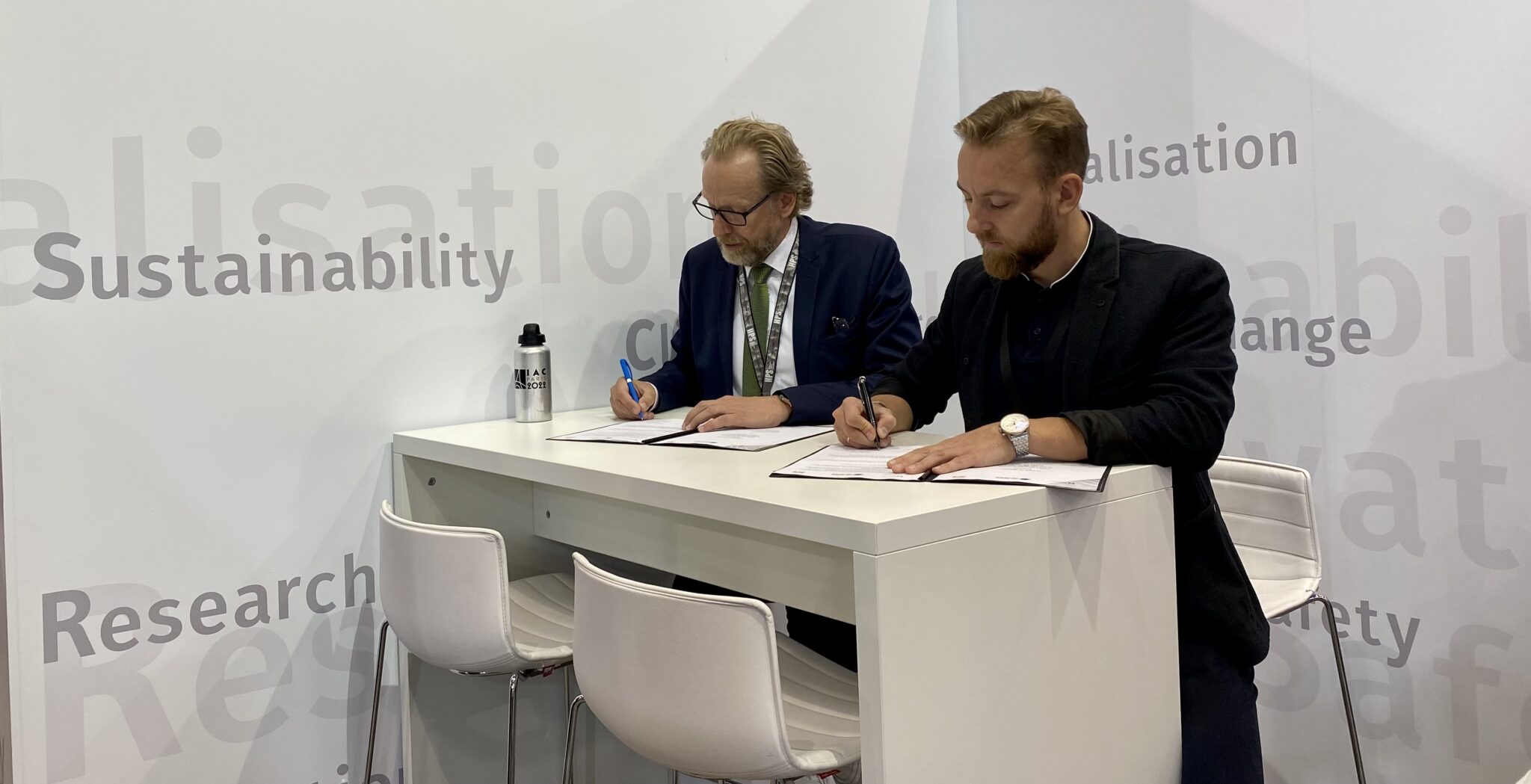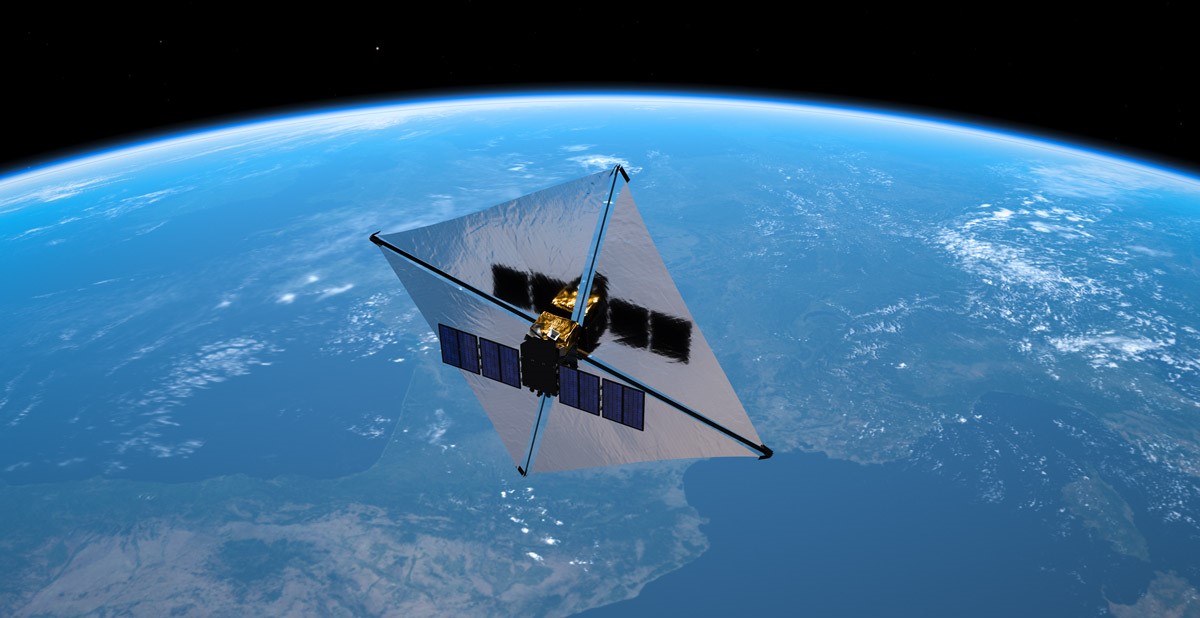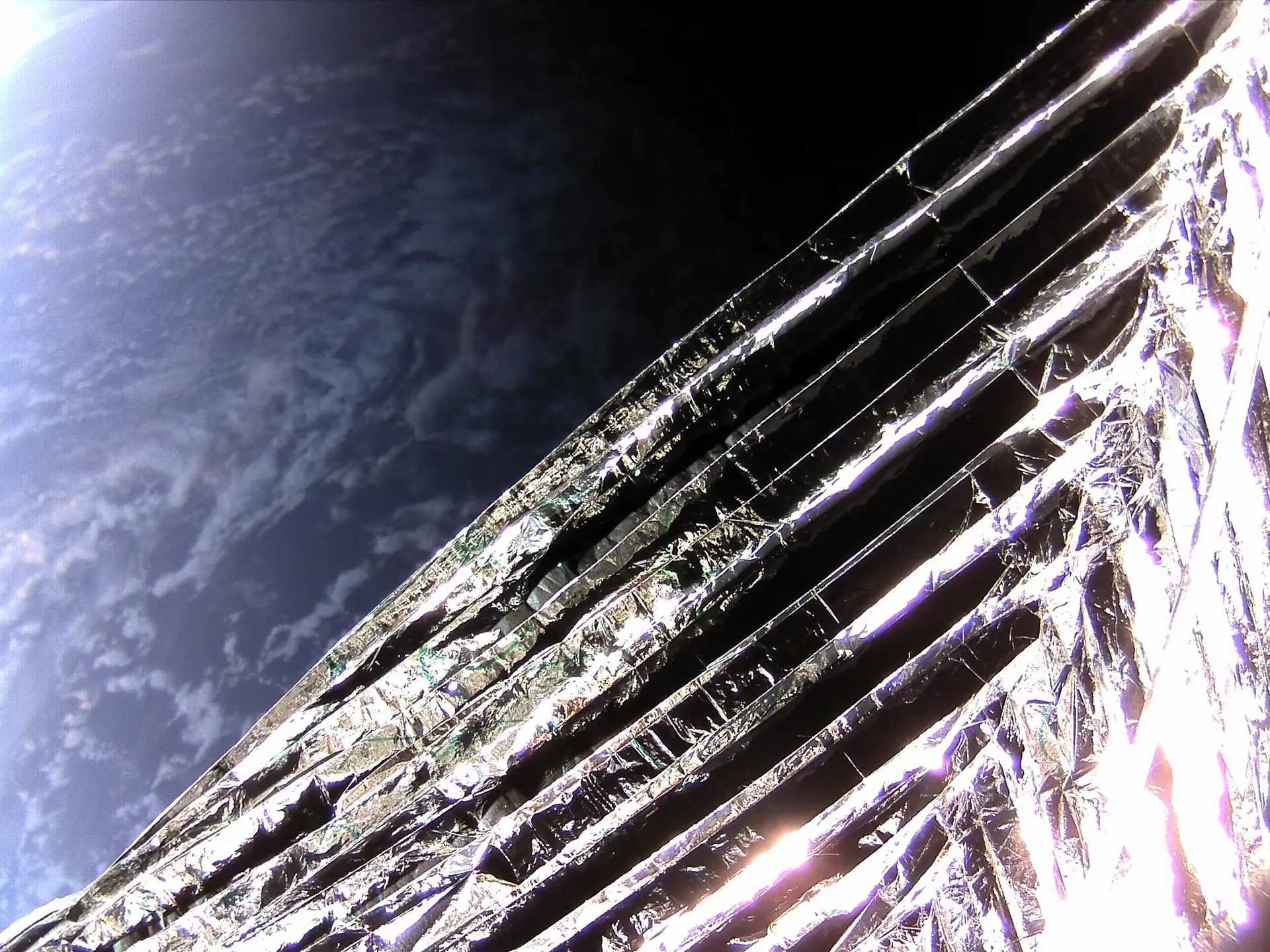
Dcubed to supply actuators for HPS' ADEO brake sails
Published on Sun, 05.02.2023 – 08:48 CET in Cooperations, covering DCUBEDSpace debris is a serious problem in space. Currently, there are more than 36,500 objects in orbit with a size >10 cm that are declared as debris. For smaller pieces (1 mm - 1 cm), the number rises to 130 million. To prevent retired satellites from occupying valuable orbits, a number of disposal options are being developed. One of them is the ADEO braking sail from HPS.
The standard size of a CubeSat is only 10 x 10 x 10 cm. Fitting technology into this space, known as 1U, is a challenging task. The German company High Performance Space Structure Systems GmbH (HPS) has succeeded in stowing away a 3.6 square meter aluminum-coated polyamide membrane. The so-called "Drag Augmentation Deorbiting System Nano" (ADEO-N) is designed to help satellites disappear from orbit more quickly. This is achieved by deploying the braking sail at the scheduled time, typically at the end of a mission or in the event of a satellite failure. The increased surface area increases the drag of the remaining, albeit extremely thin, atmosphere. As a result, the satellite is slowed down and moves back toward Earth until it finally burns up.
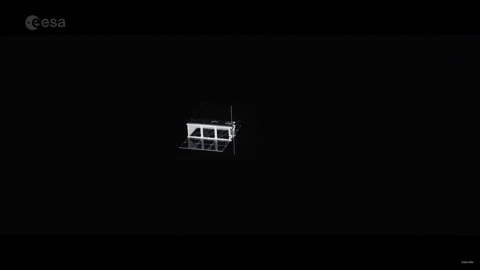
Immediately operational
The critical aspect of this principle is that the trigger mechanism for deploying the braking sail is not used until the end of the mission. This means that it spends several months to years in a kind of Sleeping Beauty slumber, exposed to extreme temperature fluctuations and radiation. Nevertheless, it must be ready for immediate use when activated. Dcubed's actuators are designed for these inhospitable conditions and for use in miniature satellites. The startup, based in Germering, Bavaria, has now announced that it will supply the actuators needed to deploy ADEO.
ADEO-N deploys in a fraction of a second
The Munich-based company has already successfully demonstrated that the HPS principle works. In 2018, a 2.5-square-meter version of the sail was attached to the upper stage of a Rocket Lab Electron rocket as part of the "It's Business Time" mission. Several parabolic flight tests followed between 2019 and 2022, and an ADEO-N was launched into space in 2021. It was housed in a 1U CubeSat that was part of the ION satellite carrier operated by the Italian company D-ORBIT. The final qualification test was called "Show Me Your Wings" and was intended to provide the final technological proof of concept. After several months in space, the braking sail was finally deployed automatically. Since ION also has an integrated camera, this process could be closely observed. The deployment of this sail takes only 0.8 seconds.
De-orbiting satellites four times faster with ADEO braking sail
Until a few years ago, retired satellites were largely left to their own devices, or rather to the force of gravity. Of course, gravity works at high altitudes, too - otherwise we would have lost the moon long ago. But it is so small that from an altitude of 1,200 km, satellites would take about 2,000 years to return to our home planet. So if a satellite had been launched when Jesus was born, it would be back now. From an altitude of 800 km, this process still takes about 150 to 200 years, and from 500 km, about 25 years.
Wir wollen eine Null-Schrott-Politik einführen: Wenn man ein Raumfahrzeug in die Umlaufbahn bringt, muss man es auch wieder entfernen.
Josef Aschbacher, ESA Director General
For some time now, a de-orbit time of about five years has been the industry standard. To achieve this, satellites are deliberately slowed down, for example by tilting their solar panels towards the Earth, effectively "against the wind". Another way to speed up re-entry is to fire the engines. With ADEO, this process should be even faster, as ESA structural engineer Tiziana Cardone, who is involved in the project, points out: "The ADEO-N sail ensures that the satellite re-enters in about one year and three months, whereas otherwise it would have taken four to five years".
ESA wants to completely avoid the creation of new space debris from 2030 onwards
The system developed by HPS is not only suitable for cubesats, but is also scalable. This means that several braking sails can be combined and mounted on medium and large satellites, as well as on upper stages of rockets. In its largest version, ADEO covers an area of 100 square meters and takes about 45 minutes to deploy.
With this technology, HPS and Dcubed are making a significant contribution to ESA's Zero Debris Initiative. This initiative aims to eliminate the generation of new space debris by 2030. The reliable removal of satellites that are no longer needed is an important aspect of this initiative. On the one hand, because it frees up valuable orbits. It also reduces the risk of collision. More than 100 million orbiting debris show that this step has not come too soon.

